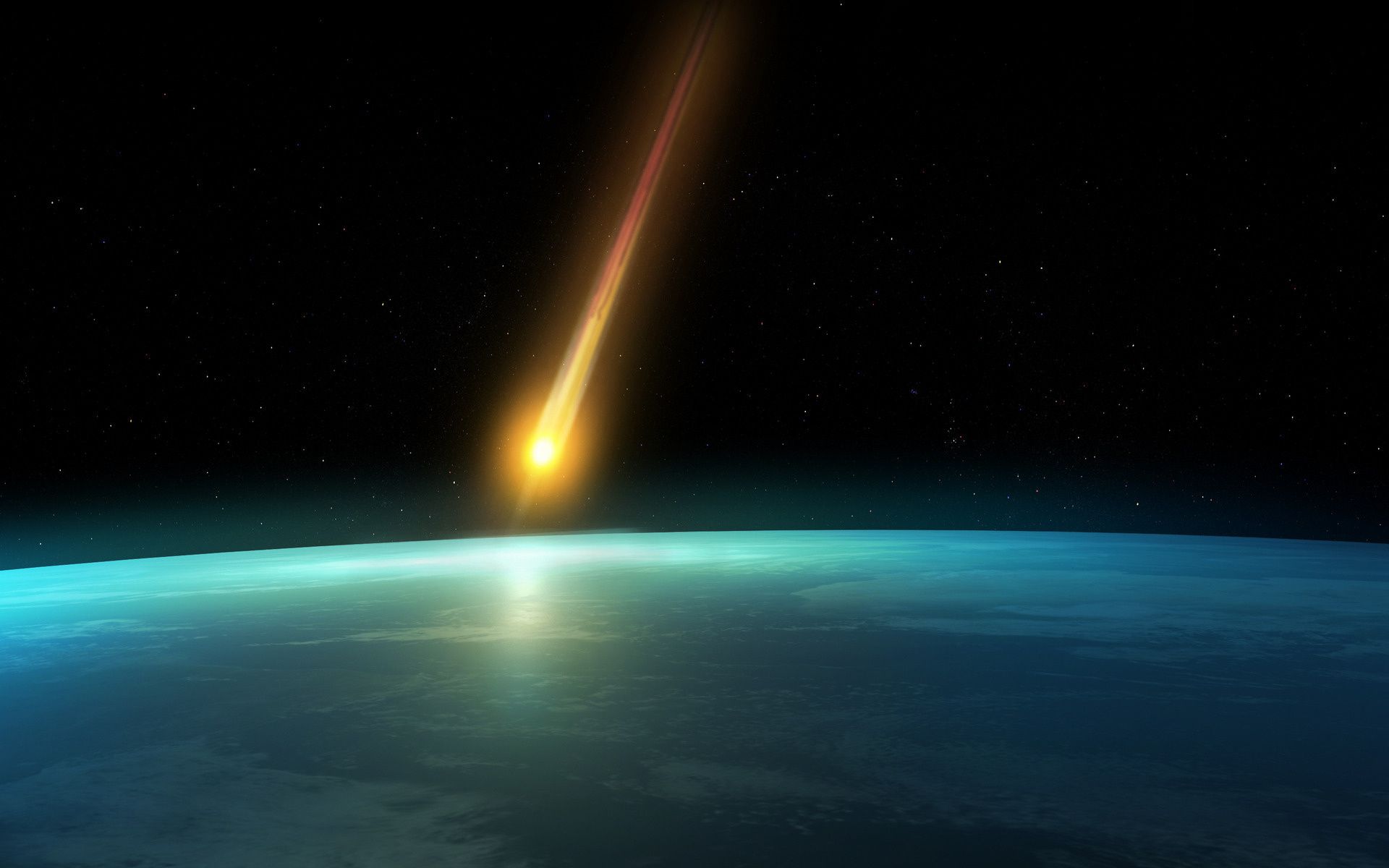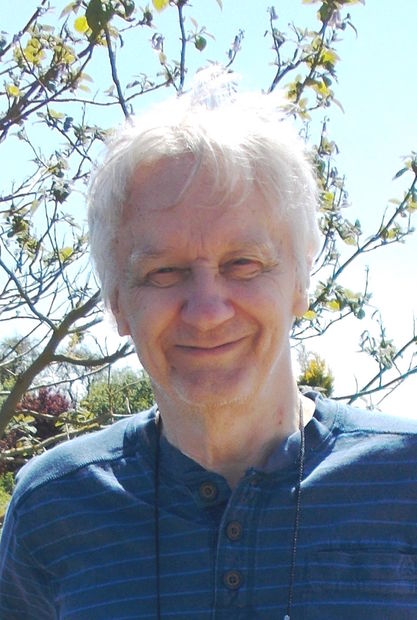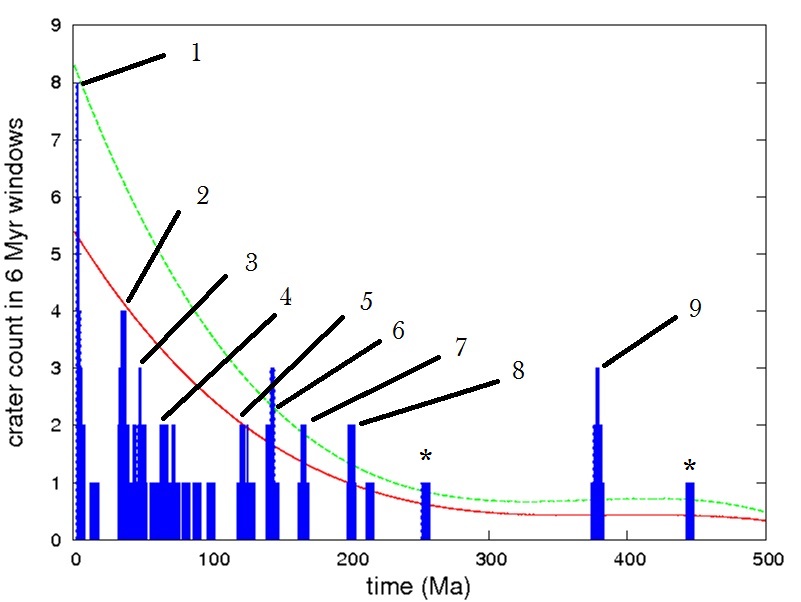It was an easy call whom to approach first, Bill Napier. He is a digital acquaintance of mine, a cool guy and a wiseman. Astronomer, best-selling popular author, frequent contributor to a 40 year canon of astronomical justification for end-times in the peopled past — Bill Napier is simply a Tusk kind of guy!
Napier and his collaborators in the old country are even credited with their own handle, "British Neo-Catastrophists." Post-Newton and Whiston, Post-Velikovsky, concurrent with Alvarez but Pre-Firestone — shunned by NASA and employed by the Queen — they are contributors to a cogent set of astronomical facts termed "Coherent Catastrophism," a body of evidence concluding that quite horrible cosmic encounters have occurred in the human past.
Here goes:
CT: Dr. Napier, thanks for joining the Cosmic Tusk for our inaugural interview! How's the weather over there on the Emerald Isle?
A. Sunny at the moment, but I'm not too far from the Atlantic and I can see clouds coming our way. It'll be wet and windy by the evening. Good whisky weather.
CT: My kind of island, Bill. As many Tusk readers are aware, you and your many collaborators, particularly Victor Clube, are known for maintaining in publications since the 1970's that a large comet entered our solar system ~20,000 years in the past, began to progressively disintegrate, and left behind increasingly diffuse streams of cometary material which periodically wreaked havoc on our ancient ancestors. What first got you and Clube interested in the giant comet theory?
BN: My own interest in impacts as having a catastrophic potential for life goes back to about 1970, almost back to my student days. Victor Clube joined the Royal Observatory at Edinburgh, where I worked, in the early 70s. He was interested in the possibility that violent Galactic events might from time to time have terrestrial consequences. It was very natural that we should put our heads together on these topics, and we did so from the mid-70s onwards. We soon realised that the Oort cloud is liable to disruption during the Sun's orbit around the Galaxy, flooding the planetary system with comets, and that there are some really big ones out there. We had a primitive but working theory of catastrophism by the late 70s (e.g. Napier & Clube, Nature 282, 455, 1979, wherein we remarked that "historical records are a potential source of data for testing our hypothesis."). It was actually Fred Whipple at Harvard University who first took the view that Comet Encke was the remnant of a much larger body, and we picked up that idea and ran with it. The big puzzle for us was why the Comet Encke progenitor went unrecorded in the historical record. Even at a diameter of 20 km it would have been almost as bright as the full moon.
CT: Interesting you say you were "puzzled" that giant comet went "unrecorded," Bill. You must have later come to believe that these events were indeed "recorded," but in religious traditions and mythology, as you maintain in your books Cosmic Winter and Cosmic Serpent. Was that realization subsequent to your astronomical conclusions? Tell us how myth began to play a role in your studies.
BN: No question, the astronomy came first. There were two components to this. The likely impact rate of Tunguskas and super-Tunguskas made us wonder where these things were in the historical record, and of course the disintegration products, plainly visible in the sky, of a large progenitor comet provided another where-is-it-in-the-record paradox. Victor had some ancient book by Bellamy who had some strange ideas about disintegrating moons recorded in ancient tales; all I could find in our local library was a book by Fontenrose on Delphic myth. We started from there. It wasn't long before we learned that astronomical motifs of a catastrophist nature are to be found scattered throughout ancient tales. And of course others had been there before us throughout the centuries, all the way back to the classical authors.
CT: Fontenrose and Bellamy? That's obscure stuff the Tusk will have to follow up on! I noticed that you provided Chapter 11 in respected science author Nick Bostrom's book, Global Catastrophic Risks, and referred to evidence from myth as obviously "qualitative," and that "one man's unifying hypothesis is another's Velikovskian fantasy." Great quote. So let's turn to the quantitative evidence of recent catastrophe. Outside the work of the YDB team, where do think "traditional" evidence for determining the frequency of impacts has gone wrong? Where do find quantitative evidence for more frequent impacts that NASA, for instance, does not?
BN: The "traditional" route was set in the 1970s and later, when it was generally assumed that Earth crossers were perturbed out of the main asteroid belt. There was little inkling of the big populations on the fringes of the planetary system, feeding into unstable orbits between the giant planets. Impact hazard assessments based on this model may still be fine for short timescales. Imagine, however, taking a snapshot of a railway station. Depending on the time and date, you might see a handful of cleaning staff, a rush hour crowd, or holiday time congestion. If you use this single snapshot to predict tomorrow's throughput, you could get it spectacularly wrong. To get a reliable assessment you need to look at the bigger picture, and the trouble with current impact estimates is that they don't. They assume statistical completeness, i.e. that the current situation is typical. Chapman and Morrison, for example, estimate the probability of a globally destructive impact over the next 10,000 years to be about 1%. I have no idea what the real figure is, but I do know that on a timescale 30,000 or so years, there's an expectation that a comet with at least 100 times the mass of the entire near-Earth asteroid system will enter a short-period orbit and disintegrate in our neighbourhood. Comets break up by a variety of routes, hierarchic fragmentation being a major one. Brief, strong surges of impact are then a distinct possibility, rendering the Chapman/Morrison/Harris model more or less irrelevant when it comes to assessing the hazard to civilisation. Whereas this traditional route will tell us to expect a few hundred megaton impact, yielding regional damage, the real encounter mechanics may be quite different and may have global consequences. The good news is that we would probably get plenty of warning. Dark comets emerging from the Halley system are a different matter, but that hazard is unquantified.
Comment: Bill may be engaging in some wishful thinking here in claiming that we'll probably get plenty of warning, considering how many comets that are passing close by Earth are found only days or weeks ahead of time (if at all), like this most recent one: Civilization-destroying asteroid, discovered two weeks ago, to skim Earth on Halloween
As to when this might have happened in the past, it's long been known that the zodiacal cloud is substantially overmassive in relation to the available supply of dust, with David Hughes for example concluding that 'at some time in the last 1000 to 100,000 years, the cloud has benefited from a large and unusual mass enhancement'. A massive radar survey of meteors undertaken by Peter Brown's Canadian group in recent years, coupled with their dynamical modelling, has strengthened the result that much of the zodiacal cloud came from the progenitor of Encke's comet and that it was an unusually large object. The destruction time of the zodiacal cloud is something between 10,000 and 20,000 years, straddling the Younger Dryas boundary.
Another way. Consider the impact cratering record as recorded in the Earth Impact Database. The impact record is dominated by episodes of multiple bombardment. I've labelled these in the diagram, which plots only the best dated craters. We've demonstrated in the refereed literature that (a) fragments from main belt asteroid collisions fail by an order of magnitude to reproduce these episodes; (b) comet showers from Oort cloud disturbances likewise; and (c) the known population, size distribution and orbital flow of centaurs can account for the record. (Most of the episodes coincide in time with major extinction events, and the asterisks mark a couple of singlets that also coincide with big extinctions. These impacts are generally too small individually to have caused the mass extinctions and can only be proxies for some other astronomical process, such as stratospheric dusting.) Considering all 184 impact structures in the database, it turns out there is only one in the range 5 - 35 million years (the Ries crater 24 km across). Using the traditional estimates, we expect something like 17 land impacts to have made craters >20 km across over this interval. Most of these should have been discovered, this being a relatively recent era. It's hardly credible that we have missed 16 out of 17 of them; the dearth is real. Conversely, there seems to have been a surge of impact cratering in the recent past relative to the long-term average. All this makes sense if the prime impactors are derived from the breakup of large comets, since their mass distribution is top-heavy and their input is erratic and episodic. I think the Galactic environment also plays a role through disturbing the Oort comet cloud, for example when we pass through spiral arms.
The statistics don't reveal any significant difference between the temporal behaviour of large and small craters in this respect. The asteroid belt may well be okay as a supplier of small impactors, incoming comets for larger ones, but it's not clear to me where the breakeven point lies. All three major 20th-century impacts (Tunguska, British Guyana, Curuca River) coincided with our passage through major meteor streams, and the odds of this are about 1000 to one against. Peter Brown and colleagues, in a letter to Nature published last year, suggest that the number of impactors up to Tunguska-sized is up to ten times higher than previous estimates based on long-term lunar counts. Again, we're looking at a flickering system.
CT: Bill, you labeled the current understanding the "Chapman/Harris/Morrison" model, referring respectively of course to Clark Chapman, Alan Harris, and David Morrison. These gentlemen are older scientists in the US and well known to the Tusk as catastrophe deniers. You addressed some of Morrison's objections to your understanding of the situation a few years back, comments which can be found here in the Tusk for those interested. What fascinates me is how these three gentlemen have built careers (See also Plait, Phil and Boslough, Mark) based on conflicting public contentions. To wit: the cosmic threat is dangerous enough for them to write books and give speeches about, but not so dangerous the public should be genuinely concerned; and it's awkward companion message: the impact threat is so well constrained there is no room for scholarly disagreement, yet their field of impact desperately needs further funding and study because...there is still "so much we don't know!" Are these guys scientists — or intellectual contortionists?
BN: My guess would be that they want to steer a course between alarmism and complacency (the giggle factor), and that different aspects of the celestial hazard issue are emphasised depending on the audience and the context. However, more to the point, their model fails to predict the YDB phenomena. If the YDB teams are right, the CMH model is up against a real problem. It also fails to account for (and the protagonists continue to ignore):
1) Not just the whole array of YDB evidence, but also that of Marie Agnes Courty, indicating that major cosmic disturbances of some sort took place 12,800 BP and 2350 BC, the latter collapsing the earliest civilisations.
2) The evidence, decades-old now and not even controversial amongst the comet community, that an exceptionally large, low-inclination, short-period comet has been orbiting in our neighbourhood for about 20,000 years. The massive Canadian meteor survey of Peter Brown and colleagues, for example, confirming this, has been simply ignored by the CMH group. And yet in such a disintegrating environment there is a reasonable probability of a catastrophic encounter with debris in the comet trail. In this connection my colleagues have further material upcoming.
3) The finding that large bodies leak inwards from beyond the edge of the planetary system, entering unstable orbits which yield large Earth-crossing comets at a calculable rate, and that the inner interplanetary environment is thus subject to substantial mass enhancements (factor of 100 or more) at intervals comparable with the timescale of civilisation to date.
4) Impact cratering statistics, using the best extant data, demonstrating the existence of bombardment episodes throughout geological history, most easily explained as giant comet breakup and specifically not explicable by asteroid breakup or Oort cloud disturbance. For example the 24 km Boltysh crater in the Ukraine crater in the Ukraine was formed within 2000-3000 years of the Chicxulub impact crater; the odds of this synchronicity being down to chance are 2500 to one against for this pair alone, 1000 to one against for the Popigai/Chesapeake pair and so on.
If the silence on these points is like something out of Kafka, such counter-arguments as we have heard are like something out of Mickey Mouse. The "it's impossible" argument continues to be presented years after its deficiencies have been pointed out and a working model described in the peer-reviewed literature; one protagonist's answer to a journalist's question about the evidence for bombardment episodes (a Bayesian analysis which survived tough refereeing) was that he could draw dinosaurs in the sky by joining up stars; and another's objection to our long-running Taurid complex studies was that "colleagues who do dynamics" find them unreasonable. Anonymous colleagues giving unspecified reasons: maybe more Kafka than Mouse.
CT: Outside astronomical evidence what do you personally find most convincing of catastrophe in human times, given the array of evidence you have reviewed over the decades?
BN: It's always hard to evaluate evidence in fields outside one's own, but to me the continuing accumulation of impact proxies by independent groups - melt glass, nanodiamonds, Greenland platinum spike and so on - provides compelling evidence that a cosmic input of some sort occurred at the onset of the YD cooling. And the finding by the Belmont group of a second nanodiamond peak a few thousand years in the past is exciting: it strengthens Marie Agnes Courty's long-running contention that of a more recent event at 2350 BC, again coincident with a widespread cooling, and drought, sufficient to bring about the collapse of the earliest civilisations.
CT: I understand you have several writing projects underway. What can expect to see from you in the future?
BN: A review article Centaurs as a hazard to civilisation by a bunch of us is due for publication in the December 2015 issue of Astronomy & Geophysics, an in-house journal of the Royal Astronomical Society. We have things to say, inter alia, about the Chapman/Harris/Morrison model. Once published, I anticipate it will become widely available.
I have a popular science manuscript, provisionally entitled Cosmic Roulette, which covers the issue of humanity's vulnerability in the cosmic environment. Tusk-like material is, of course, a conspicuous feature of the book. I still have a chapter or so to finish off.
I've also resumed my fiction writing after a long layoff due to research commitments, and have completed two thriller manuscripts. The Younger Dryas boundary issue plays an important part in The Doomsday Vault (the fictional scientists therein have no connection to any real ones!), and Meltdown is partially set in the Syrian desert.
All three manuscripts have now gone to an agency, and I'm awaiting their response.
CT: Bill, thank you so very much. I am a horrible novel reader but certainly will be reading The Doomsday Vault. And pimping it here on the Tusk!
BN: Thank you for giving me the opportunity to have my say.






Comment: As a reminder of what can come out of the sky without any warning at all, see the Chelyabinsk meteor from February 2013:
Comment: For more on the very high probability of Earth soon being on the receiving end of a major cometary bombardment, and why, see Laura Knight-Jadczyk's Comets and Catastrophe series:
- Tunguska, Psychopathy and the Sixth Extinction
- Letters From the Edge
- Meteorites, Asteroids, and Comets: Damages, Disasters, Injuries, Deaths, and Very Close Calls
- Impact Hazards on a Populated Earth?
- Climate Change Swindlers and the Political Agenda
- Forget About Global Warming: We're One Step From Extinction!
- New Light on the Black Death: The Cosmic Connection
- The Hazard to Civilization from Fireballs and Comets
- Cosmic Turkey Shoot
- Wars, Pestilence and Witches
- Thirty Years of Cults and Comets
- Comet Biela and Mrs. O'Leary's Cow
- Tunguska, the Horns of the Moon and Evolution
And the books: Comets and the Horns of Moses by Laura Knight-Jadczykand Earth Changes and the Human Cosmic Connection: The Secret History of the World - Book 3 by Pierre Lescaudron
and Laura Knight-Jadczyk